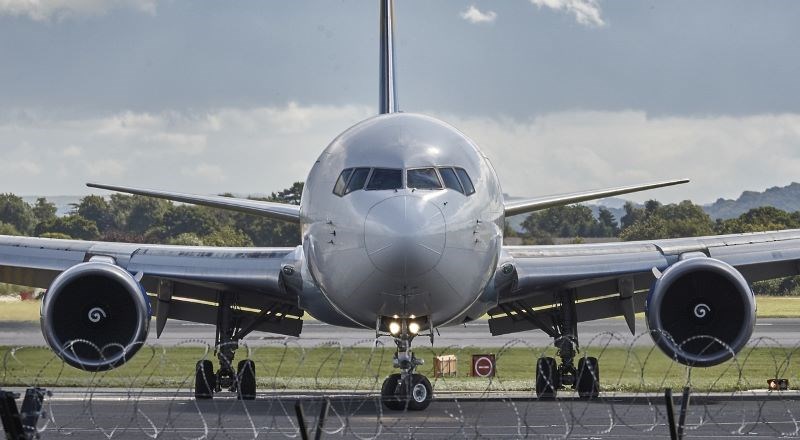Painting an aircraft requires a significant level of skill.
The aerospace industry is highly regulated, requiring strict adherence to best practices, especially when it comes to protective coatings and paint.With aircraft being required to operate in even the most extreme environments, such as fluctuating temperatures and high speeds, aerospace coatings must be durable, lightweight and highly resistant to damage.
As an engineer or technician, understanding the intricacies of aerospace paint and coatings is essential. In this article, we’ll explore best practices for the application of aerospace paints and coatings, from preparing the surface effectively to preventing corrosion.
At Aerospheres, we’re proud to be an experienced aerospace paint supplier, providing a range of industry-leading paints and coatings, including PPG PR1196-A/B and Solvay BR127. To find out more about any of our products, please get in touch.
Common Concerns When Using Aerospace Paints
After completing a job, it’s standard practice to inspect the work to ensure it meets the required quality and standards. While it’s usually easy to identify a job well done, pinpointing the exact cause of a mistake can be more challenging.
Some of the most common errors that can lead to coating issues include:
- Dirt or dust contamination
- Incorrect surface preparation
- Failure to follow the Technical Data Sheet (TDS) guidelines
- Coating composition incorrect
- Coating stored improperly or expired.
Aerospace Coatings and Paint Best Practices
1. Adequate Surface Preparation
Surface preparation is a key factor in the application of paints and coatings. In aerospace, this process is particularly critical, due to the high performance demands placed on aircraft.
- Cleaning and Degreasing: Surfaces must be completely free of oils, grease and contaminants. This can be achieved through the use of chemical cleaning agents or solvents that are safe for aerospace materials. Even minor contamination can lead to adhesion problems.
- Abrasion and Profiling: The substrate, often aluminium or composites, requires a roughened surface to allow for proper mechanical bonding of the coating. Techniques such as light abrasion or grit blasting may be used. However, the right materials must be chosen to avoid damaging delicate surfaces.
- Chemical Treatments: Chemical conversion coatings, such as chromate or phosphate treatments, are often applied after surface preparation to improve the area’s resistance to corrosion and the adhesion of the coating.
2. Choosing the Right Coating
Selecting the right aerospace paint system involves assessing various factors, including weight, performance and environmental resistance.
- Primer Coatings: The primer layer provides critical corrosion protection and improves the adhesion of the topcoat. Chromate-based primers are widely used due to their superior corrosion resistance. However, due to environmental concerns, non-chromate alternatives are becoming increasingly popular.
- Topcoats: Aerospace topcoats are often polyurethane-based, offering durability, UV resistance and flexibility. The right topcoat can significantly impact the aircraft’s ability to withstand harsh environmental factors, such as extreme temperatures and erosion.
3. Adopting the Right Application Techniques
The method used to apply aerospace paints and coatings is just as important as the material itself. To meet performance and weight requirements, they must be applied evenly.
- Spray Application: The most common technique used to apply aerospace paints and coatings is spraying. This method is especially effective for achieving an event coating and reducing material waste by ensuring better coverage.
- Environmental Control: Temperature, humidity and ventilation must be carefully controlled during the application process. High humidity can lead to moisture being trapped, resulting in blisters and corrosion under the paint film.
- Curing: Proper curing is essential for achieving optimal protection. Depending on the type of coating, this may involve ambient air drying or heat curing. This accelerates the hardening process and improves the coating’s mechanical properties.
4. Preventing Corrosion
One of the primary functions of aerospace coatings is to prevent corrosion. Certain aircraft materials, such as aluminium alloys, are highly susceptible to corrosion.
- Corrosion-Resistant Materials: Starting with corrosion-resistant alloys can reduce the overall need for extensive layers of coating.
- Regular Inspections: Even the best coatings can suffer damage over time. Regular inspections for cracks, chips and wear can help to identify areas where the coating may be failing. This allows for timely preparation before corrosion sets in.
- Touch-Up and Repair: Damaged coatings should be repaired quickly. Properly applied touch-up coatings can extend the life of an aircraft’s protective system and maintain optimal performance.
5. Considering Safety and the Environment
In recent years, the aerospace industry has seen increasing pressure to reduce the environmental impact of paint and coating processes.
- Low-VOC Coatings: Many manufacturers are now developing and using low-VOC coatings, such as PPG 8000B70846-KAHA, PPG PR205 and AkzoNobel - Eclipse ECL-G-101, which reduce harmful emissions during application.
- Non-Chromate Primers: Chromate-free primers, such as PPG CA7501A/CA7501B and Solvay BR6747-1/20% are becoming increasingly popular as an alternative to traditional chromate-based systems. Though chromate primers are highly effective at preventing corrosion, they pose significant environmental and health risks. Non-chromate alternatives offer a safer option without impacting performance.
- Personal Protective Equipment (PPE): Given the hazardous nature of many aerospace coating materials, workers must always use proper PPE. Ventilation and fume extraction systems should be used in coating areas to maintain a safe working environment.
6. Complying With Industry Standards
Aerospace paints and coatings are subject to stringent regulations and standards that ensure safety, reliability and performance.
- Qualification Testing: Aerospace coatings must undergo extensive qualification testing to ensure they meet regulatory requirements. These tests assess properties such as corrosion resistance, adhesion, chemical resistance and flexibility.
- Documentation and Certification: Each coating application must be documented, and the materials used must be traceable to ensure compliance with industry standards. Maintaining proper documentation is important for quality control and audit processes.
Browse Our Selection of High-Quality Aerospace Paints and Coatings
The aerospace industry demands the highest standards of performance and safety from its coatings and paint systems. By following these best practices, you can ensure your aircraft coatings perform at their best while withstanding the test of time.
At Aerospheres, we’re proud to be trusted aerospace paint suppliers, providing materials from a range of reputable brands. To find out more about any of the products we stock, please get in touch with our team. As your one-stop shop for aircraft maintenance, we’re ready and waiting to help you choose the right materials to suit your needs.





Comments
There are currently no comments, be the first to comment.